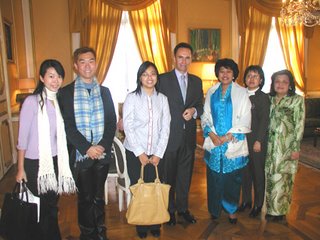By Dr Goh Khean Jin
Always feeling weak and tired? Find out what happens when our muscles are not working properly.
LINDA is a bubbly 20-year-old student. Enrolled in a hectic course at a local college, she recalls that a year ago, she started feeling tired and achy over her neck and shoulders, especially after hours being hunched over the computer. She noticed occasional double vision and drooping of one of her eyelids.
Although she felt better if she rested, her symptoms progressed. Her arms became more tired and she experienced difficulty trying to reach books in the upper shelves in the library. Over the next month, she started to have difficulty in basic activities like dressing, bathing, talking and eating (chewing and swallowing was a problem). Her droopy eyelid and double vision became persistent. Alarmed and concerned, she was referred to a neurologist, who diagnosed myasthenia gravis.
Myasthenia gravis (the name means grave muscle weakness) is a disease of the neuromuscular junction (the connection between nerve and muscle) resulting in failure of the signalling between nerve and muscle and hence muscle weakness. It is one of many disorders affecting the muscles, which although uncommon, often has a profound effect on patients?lives.
How does muscle disease affect us? 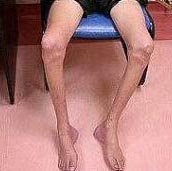
Muscles perform movements which are directed by our brain. Muscles are either voluntary when they respond to conscious instruction from our brain, or involuntary when they function autonomously without our being aware of it (for example the beating of the heart and bowel movements).
The obvious effect of muscle disease ?myopathy ?is therefore weakness. In addition, some patients will complain of muscle cramps, stiffness, and pain. Long-standing muscle disease may result in wasting (atrophy) of affected muscles, although occasionally some disorders will cause muscle enlargement (hypertrophy) instead. Muscle weakness and wasting in the legs of a person with hereditary myopathy.
Generally, muscle diseases can be considered in two broad categories ?those the patient develops later on in life and those that are hereditary (due to an abnormal gene, present from birth).
The hereditary muscle diseases usually present early in life, at birth or in childhood, but occasionally develop in adult life. They are a diverse group and include many genetic disorders.
On the other hand, acquired muscle disease often present later in childhood or in adults and may be due to inflammation, infection or toxin-induced damage.
Myopathies often result in weakness of the upper arms, shoulders, hips and thighs; viz. 損roximal?weakness (as these muscles are closer to the trunk). Patients therefore complain of difficulty in climbing stairs, getting up from sitting or squatting and inability to reach up above the head with their arms. If severe, patients may stand with an abnormal posture and have an unusual way of walking in which they sway their hips to maintain balance (waddling).
Weakness may also affect other muscles, such as the eye muscles, resulting in drooping of the eyelids (or ptosis) and double vision. If muscles of facial expression are involved, it is difficult to smile, frown or whistle. If throat and palate muscles are involved, theres difficulty in swallowing and speaking clearly.
Some patients, such as Linda, may not realise that they are weak and complain instead of tiredness and lack of muscle endurance. This may be more obvious after prolonged activity or exercise and may improve if they rest. Doctors refer to this as fatigue and it is often the hallmark of diseases of the nerve-muscle junction such as myasthenia gravis.
Unusually, rather than weakness, some muscle disorders may present with pain and cramps (for example in diseases of abnormal muscle metabolism) or muscle stiffness (myotonia) due to an inability of the muscle to relax fully.
How do doctors diagnose muscle disease?We all feel tired off and on. Some of us who are less physically active may complain of lack of endurance and exhaustion, especially during heavy physical work. So when does feeling tired, exhausted and weak indicate muscle disease?
This can sometimes be difficult, especially in the early stage of illness and the symptoms are not severe. Generally, it would be of concern if the weakness is out of proportion to the activity performed or if muscles that do not normally weaken, for example, muscles of the eye, head and neck, become involved. Other significant symptoms associated with weakness would be muscle pain and wasting (shrinkage) of the muscle.
Doctors will usually examine patients with weakness to determine its pattern and severity to see if it fits a myopathy. Specifically, other diseases causing weakness such as those affecting the brain or other parts of the nervous system as well as systemic diseases need to be ruled out.
Linda's neurologist, suspecting a muscle disorder, carried out blood tests and electromyography (EMG). Blood is usually taken for creatine kinase (CK), the level of which is raised when there is damage to muscle cells. Electromyography (EMG) is a test in which electrical potentials within the muscle are analysed using specialised needle electrodes. Analysis of these potentials confirm the muscle disease and occasionally suggests the underlying cause. In Linda's case the EMG showed abnormal signal transmission between nerve and muscle, confirming myasthenia gravis.
Many patients suspected of myopathy will also be asked to undergo a muscle biopsy. Muscle biopsy is a procedure in which a piece of muscle tissue is taken from the arm or leg for examination under a microscope to determine the type of muscle disease. Using specialised techniques, the pathologist can diagnose many types of muscle diseases from the biopsy tissue.
Hereditary muscle diseases are often suspected if there is a history of similar disorders in other family members. In some of these conditions, genetic tests can be carried out to confirm the diagnosis. Occasionally, specialised radiological scans such as computed tomography or magnetic resonance imaging provide non-invasive ways of looking at muscle and may be helpful in diagnosis.
Muscle diseases are usually classified as acquired or hereditary.
Acquired muscle disorders
Myasthenia gravis is an autoimmune disorder in which the body's immune system fails to recognise elf proteins?and instead produces antibodies which attack the body's own tissues rather than foreign viruses and bacteria. In this disease, the signal from the nerves is prevented from reaching the muscle by an abnormal antibody called the acetylcholine receptor antibody. This blocks a chemical receptor on the muscle cell, preventing the chemical messenger, a substance called acetylcholine, from interacting with the muscle cell.
Patients, like Linda, complain of fatigue and weakness, usually starting in the muscles of the eye. They develop drooping of the eyelids (ptosis) and double vision. The weakness may remain around the eyes only (ocular myasthenia gravis) or it may spread to involve other muscles of the body (generalised myasthenia gravis).
Myasthenia gravis usually affects young adults (although it may occur at any age) and is twice as common in women as in men. Diagnosis is not always straightforward, and may be missed in patients with milder symptoms. If the condition is suspected, specialised EMG tests, namely repetitive nerve stimulation and single fibre recording show an abnormality in nerve signal transmission. The diagnosis is often confirmed by testing the blood for the acetylcholine receptor antibody.
Doctors treat myasthenia gravis with medications that boost the signal between nerve and muscle. If they do not work, then drugs which modify the immune system are used. These would include steroids and other immunosuppressive medications.
In some patients, a gland in the chest called the thymus may be enlarged. It is believed that the thymus is the source of the abnormal antibodies and in these instances, surgical removal of the gland (thymectomy), may have to be considered.
Myasthenia gravis is a chronic disease and some patients will be on medication for a long time. However, if properly treated, most patients manage their symptoms well and lead active lives, and many will remain asymptomatic for a long time. Nowadays, it is no longer the rave muscle disease?it was once thought to be.
Another common group of muscle disorders result from muscle inflammation (swelling and irritation). They include polymyositis and dermatomyositis (myositis = inflammation of muscle). Patients develop progressive muscle weakness, usually more prominently in the large roximal?muscles (closest to the trunk).
However, if untreated, the weakness will gradually involve other muscles including the smaller istal?muscles as well as those of speech and swallowing. An important feature is that patients often complain of muscle pain due to the inflammation. In dermatomyositis, patients also develop a characteristic skin rash over the face and hands.
Like myasthenia gravis, the inflammatory muscle diseases are also autoimmune diseases: the body抯 immune system attacking its own muscle. Occasionally, these myopathies may occur together with other autoimmune diseases such as rheumatoid arthritis and systemic lupus erythematosus.
There is also concern that there is an association with cancers, especially in dermatomyositis of adult (but not childhood) onset and doctors will screen for underlying tumours in an older patient.
Muscle biopsy will usually confirm the diagnosis and differentiate between the various myopathies. Treatment is usually with medication that suppresses the body's immune response, such as steroids and other immunosuppressive agents. Most patients respond to treatment if the condition is diagnosed early and prompt treatment is begun, but they may have to be on long-term medication.
A third entity called inclusion body myositis, however, is less responsive to treatment and may result in progressive muscle weakness.
Hereditary muscle disorders
One of the most common hereditary muscle diseases is muscular dystrophy. This is a heterogeneous group of disorders in which there is muscle weakness, often beginning in infancy or childhood, but sometimes presenting in adults. Progressive muscle cell damage is caused by a genetic abnormality.
The most common is Duchenne Muscular Dystrophy (DMD), originally described over a century and a half ago by Guillaume Duchenne, a French neurologist. The abnormal gene is located in the X-chromosome and hence primarily affects boys. There is loss of a protein called dystrophin, which is responsible for the stability of the muscle cell. DMD boys are normal at birth but gradually lose their muscle strength, have difficulty in walking and later are wheelchair-bound by their teens.
Involuntary muscles including cardiac and gut muscles are often affected as well, resulting in irregular heart beats and reduced bowel movement. A typical feature is enlargement of the calf muscles (hypertrophy) due to replacement of muscle tissue by fat and fibrous tissue.
Becker's Muscular Dystrophy (BMD) is a less severe form affecting older boys or adults, in whom the muscle has dystrophin but it is of poor quality. Muscle biopsy specimens of these patients will show abnormalities of dystrophin, and genetic testing will confirm the diagnosis. Treatment currently is supportive with good physical therapy, occupational therapy and use of walking aids and wheelchairs to maintain function for as long as possible. There is currently no medication that will reverse the muscle damage.
Other forms of muscular dystrophies have varied clinical features involving different parts of the body. Examples are facio-scapulo-humeral muscular dystrophy (FSHD) and the various forms of limb-girdle muscular dystrophy (LGMD).
Ever since the gene for DMD was discovered in the mid-1980s, many more types of muscular dystrophy have had their genetic abnormalities unravelled. This would be the first step in discovering a treatment for this debilitating condition.
There have been several attempts at gene therapy: these include injection of myoblasts (primitive muscle cells) into the patients?weak muscles, and gene transfer using viruses. Unfortunately, none has yet been shown to be successful. Although there have been some promising developments, we are still some distance away from a cure for the disease.
The challenges for the future
Despite great strides in research, notably in the hereditary myopathies, there is much that is still unknown about the types and causes of muscle disease. Myopathies have a wide clinical spectrum, varying from mild to severely disabling. It therefore imposes no little burden on the health care system.
In tandem with research in diagnosis and therapy, much needs to be done in terms of rehabilitation and social support for those afflicted. In the US, Australia and Singapore, non-governmental organisations (NGOs) such as national-level Muscular Dystrophy Associations are active in assisting health policy planners to raise awareness of these disorders among the public.
A similar organisation locally will give impetus to the development of medical and community services for such patients as well as spur research in this wide and challenging field.
Note: For further information, readers are directed to the following websites:
1. Muscular Dystrophy Association of America - http://www.mdausa.org/
2. Muscular Dystrophy Campaign (UK) - http://www.muscular-dystrophy.org/
3. European Neuro-Muscular Centre - http://www.enmc.org/
4. Muscular Dystrophy Association of Australia -
http://www.mda.org.au/Related Link:
A person who sit on wheelchair able to stand up again!
Technorati Tag:
Biotechnology pharmaceutical Diabetes Malaysia food supplement GT&F Health & wellness myasthenia gravisDr Goh Khean Jin is a consultant neurologist. This article is contributed by
The Star Health & Ageing Panel, which comprises a group of panellists who are not just opinion leaders in their respective fields of medical expertise, but have wide experience in medical health education for the public.
The Star Health & Ageing Advisory Panel provides this information for educational and communication purposes only and it should not be construed as personal medical advice. Information published in this article is not intended to replace, supplant or augment a consultation with a health professional regarding the reader own medical care.
The Star Health & Ageing Advisory Panel disclaims any and all liability for injury or other damages that could result from use of the information obtained from this article.










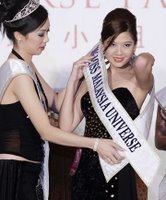



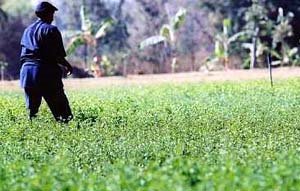
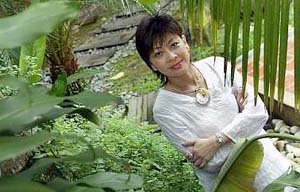
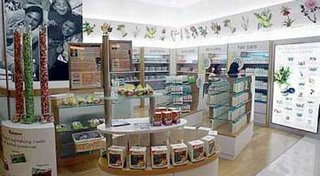









 Skin Food
Skin Food





